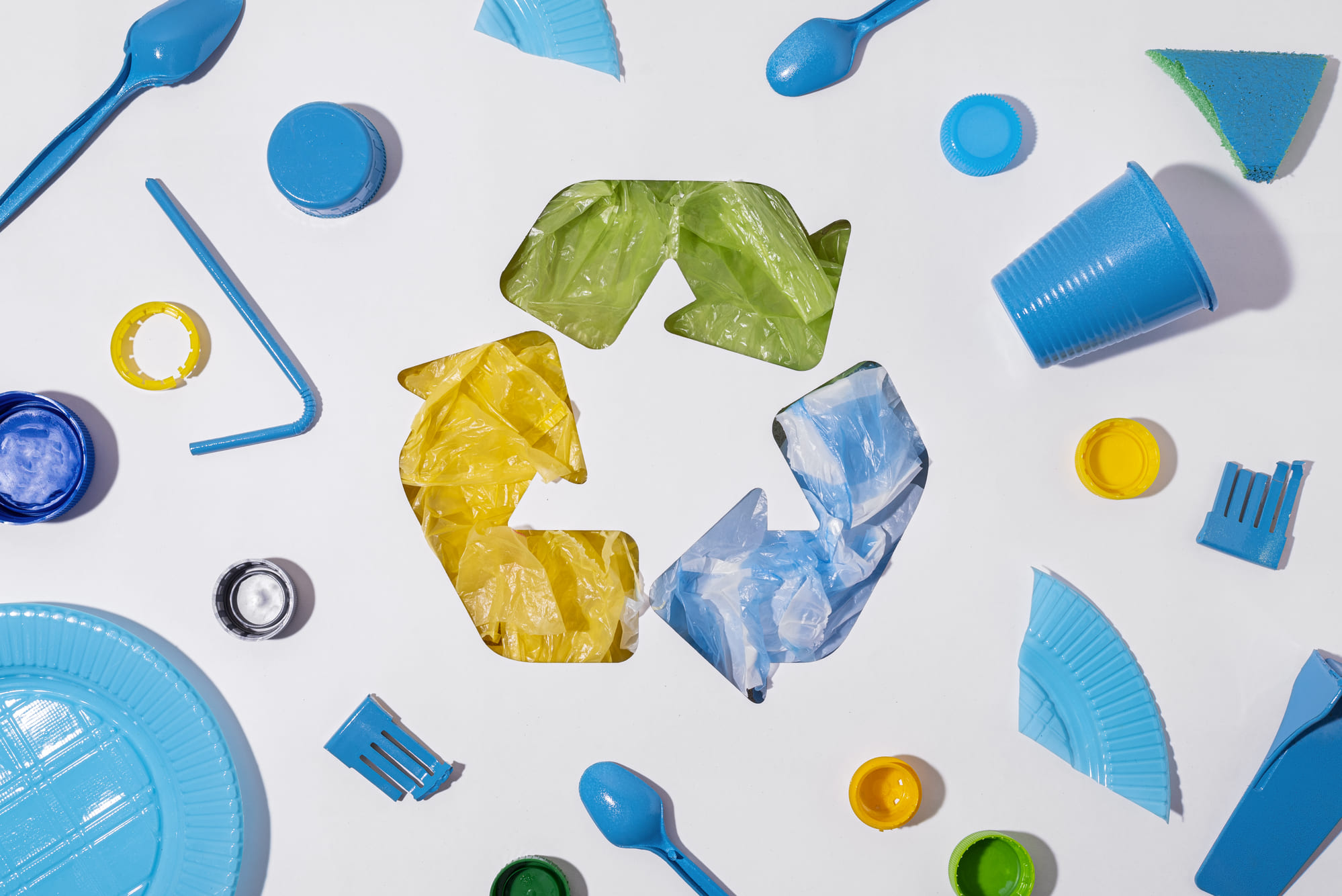Recycling plastic packaging: how does it work?
Recycling plastic packaging has become a major ecological issue. Indeed, in Europe for example, around 40% of plastic waste comes from packaging.
Recycling plastic packaging has many advantages:
1 – It saves natural resources
2 – It reduces greenhouse gas emissions
3 – It creates jobs in recycling industries
4 – It reduces pollution and helps preserve our environment

Technological advances, public and private initiatives as well as growing consumer awareness have led to an increase in the collection and recycling of plastic packaging in Europe. Discover the different aspects of plastic packaging recycling: the types of plastics used, the recycling process, the advantages and the challenges of tomorrow.
What plastics are used for packaging and plastic films?
There are many types of plastic films, stretchable, grouping, retractable, etc. They adapt according to the needs and particularities of use. They can be used to hold plastic bottles in a water pack, condition pallets or protect goods during transport.
Discover the plastics used for packaging and their properties:
Polyethylene (PE)
Polyethylene (PE) is a thermoplastic polymer that is often used in the manufacture of plastic films to package food or industrial products. It has many advantages, including:
- Flexibility: PE is a flexible material that can be easily shaped and molded to suit different packaging shapes.
- Low cost: PE is a relatively inexpensive material, making it a popular choice for mass packaging.
- Transparency and waterproofing: Very often produced in the form of a transparent film, it is water and air resistant.
Polypropylene (PP)
Polypropylene is also a thermoplastic polymer commonly used in the manufacture of plastic films. It is often used in food packaging, shopping bags, parcel films, etc.
- Heat Resistance: PP is a heat resistant material, making it suitable for applications such as hot product packaging or use in high temperature environments.
- Easy to manufacture: PP is easy to manufacture and process into a variety of packaging forms, such as bags, sheets or boxes.
Due to these advantages, polypropylene is widely used in the food industry, logistics, pharmaceutical industry andother sectors where strong, leakproof and recyclable packaging is required.
Polystyrene (PS)
PS is used for food packaging, such as trays and lids. It can be recycled using a process called pyrolysis, which uses heat to break down plastic into basic chemicals.
Polyvinyl chloride (PVC)
PVC is used for food packaging, shrink film and bottles. It can be recycled, but this can be difficult because it may contain additives that make it difficult to recycle. Recycling PVC is also controversial due to the potentially hazardous emissions that can be produced during the process.
PET (polyethylene terephthalate)
PET is commonly used for plastic beverage bottles, food packaging and films. It can be recycled using sorting and washing techniques similar to PE.
What is the difference between stretch film and shrink film?
Stretch film is mainly used for packaging pallets and protecting products to be transported. As for the shrink film, it is first heated to conform to the shape of an object. Then it is shrunk and welded. The latter is particularly suitable for packaging products with irregular shapes. It also has the advantage of being very resistant to bad weather (as well as UV and strong temperature variations).
Packaging recycling: the steps
Plastic packaging recycling is a process that transforms plastic waste into new products. Here are the key stages in the recycling process:
- Collection: Plastic packaging is collected in recycling bins or dedicated containers. Sorting centers can also sort recyclable waste.
- Sorting: Plastic packaging is sorted according to its type of plastic (PET, HDPE, PVC, etc.) and its color. Sorting can be done manually or with machines.
- Washing: Plastic packaging is washed to remove any contamination, impurities that can affect recycling as well as other unwanted or non-recyclable materials.
- Grinding: Plastic packaging is crushed into small pieces or granules, which facilitates further processing.
- Regeneration: The crushed plastic is melted at high temperature, filtered and molded into pellets or sheets.
- Manufacturing: The pellets or sheets are used to make new plastic products such as bottles, bags, pipes, etc
The challenges of recycling industrial packaging
Recycling post-industrial and post-commercial plastic packaging, compared to recycling household plastics, can present several challenges, including:
- The complexity of the composition: Industrial plastic packaging can be made from different types of plastics, composite materials and additives. These components can make recycling more difficult and complex, as they require more advanced sorting and processing technologies.
- Contamination: Industrial plastic packaging can be contaminated by chemical residues, organic or inorganic contaminants, or foreign materials, which can compromise the quality of recycled materials.
- Quantity: Industrial plastic packaging is often produced in large quantities, which can lead to storage and processing problems when recycling.
- Cost: The cost of recycling industrial plastic packaging can be high due to the investment required in advanced sorting and processing equipment, as well as transportation and processing costs.
- Regulations: Local and national regulations may vary regarding the recycling of industrial plastic packaging.
These challenges make the recycling of industrial plastic packaging more difficult than that of household plastic packaging.
In Europe, the recycling rate of plastic films increased from 47.7% in 2016 to 50.2% in 2018 (Source: PlasticsEurope).
